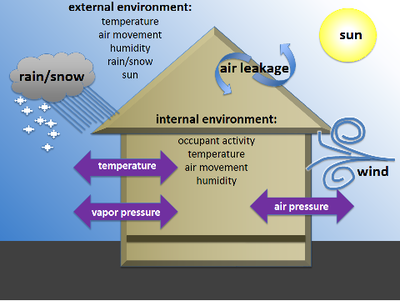Control (building envelope)
The control function of a building envelope is the most vital contributing factor to the performance of the envelope itself. Enclosures must control the movement of moisture (both liquid water and water vapor), air leakage, and heat transfer. Experience indicates the control of moisture movement is most fundamental. When this is fulfilled, the other control requirements are either simultaneously satisfied, or more easily satisfied.[1]
With respect to the control function, the goal of the building envelope is to maintain a desired internal climate despite the changing conditions of the external environment. This goal is achieved together with the mechanical equipment within a building, such as the HVAC system. Measures of the effectiveness of the envelope include its ability to provide thermal comfort, protection from the elements, indoor air quality, and energy efficiency.[2]
References
- ↑ National Institute of Building Sciences. (2013). Building Envelope Design Guide – An Introduction [Online]. Available: http://www.wbdg.org/design/env_introduction.php#fap
- ↑ National Institute of Building Sciences. (2013). Building Enclosure Design Principles and Strategies [Online]. Available: http://www.wbdg.org/resources/buildingenclosuredesignstrategies.php


